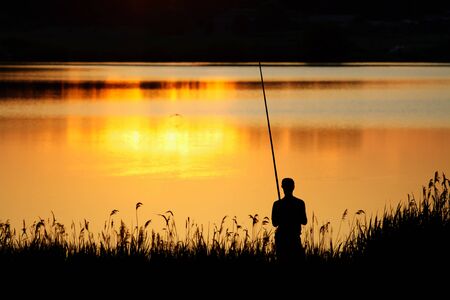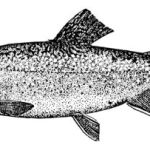1. Understanding Northern Pike and Muskie
If you’re planning to fish for big, aggressive freshwater predators in North America, chances are you’ll come across two legendary species: the Northern Pike and the Muskellunge—better known as Muskie. These toothy fish are often confused for one another, but they have distinct differences that every angler should understand.
Physical Traits
At first glance, Northern Pike and Muskie look pretty similar. They both have long, torpedo-shaped bodies and sharp teeth built for ambushing prey. However, there are a few key features that can help you tell them apart:
| Feature | Northern Pike | Muskie |
|---|---|---|
| Body Color | Olive green with light-colored spots | Lighter overall with dark vertical bars or spots (or sometimes no markings) |
| Pores on Jaw (per side) | 5 or fewer sensory pores | 6 or more sensory pores |
| Tail Shape | Rounded tail lobes | More pointed tail lobes |
| Size Potential | Typically up to 40 inches | Can grow beyond 50 inches |
Behavior and Temperament
Both species are ambush predators, meaning they lie in wait before launching a lightning-fast strike at their prey. However, their personalities can differ:
- Northern Pike: More aggressive and easier to catch. They’ll often strike multiple times if they miss on the first try.
- Muskie: Often called “the fish of ten thousand casts.” They’re more elusive and can be extremely picky about when and what they bite.
Habitats Across North America
Northern Pike and Muskie share overlapping ranges, but they do have preferred environments:
Northern Pike Habitat
- Found in weedy bays, shallow lakes, rivers, and reservoirs.
- Prefer cooler water temperatures and abundant cover.
- Widespread across Canada and the northern U.S., including states like Minnesota, Wisconsin, and New York.
Muskie Habitat
- Tend to inhabit larger lakes and river systems with deeper waters.
- Often found near drop-offs, points, and submerged structures.
- Mainly located in the Great Lakes region, Upper Midwest, and parts of Canada.
The Bottom Line on Pike vs. Muskie
While these two apex predators might look alike, knowing their physical traits, behaviors, and preferred habitats can make a big difference in your fishing success. Whether youre chasing the aggressive Northern Pike or hunting down a trophy Muskie, understanding what makes each species unique is the first step toward becoming a more skilled angler.
2. Best Fishing Locations Across North America
If you’re chasing monster Northern Pike or elusive trophy Muskie, location is everything. Across the U.S. and Canada, there are several hotspots known for producing giant fish year after year. Whether you prefer remote wilderness lakes or easy-access reservoirs, here’s where you should plan your next fishing trip.
Top Northern Pike & Muskie Hotspots
These lakes and rivers have earned their reputation among serious anglers for a reason. Each destination offers unique features—from underwater structures to seasonal feeding patterns—that make them prime territory for big predators.
| Location | State/Province | Target Species | Best Season | Insider Tip |
|---|---|---|---|---|
| Lake of the Woods | Ontario/Minnesota | Pike & Muskie | Late Spring to Fall | Focus on weedy bays during early summer and deep rock humps in fall. |
| St. Lawrence River | New York/Ontario | Muskie | Late Summer to November | Troll large crankbaits along drop-offs near island clusters. |
| Rainy Lake | Minnesota/Ontario | Pike & Muskie | Summer to Early Fall | Fish submerged weedlines with bucktails and jerkbaits. |
| Mille Lacs Lake | Minnesota | Muskie | August to October | Night fishing around moon phases can be extremely productive. |
| Lake Vermilion | Minnesota | Muskie | July to October | Casting over shallow rock reefs at dusk is a proven tactic. |
| Great Slave Lake | Northwest Territories | Northern Pike | June to August | This remote lake holds some of the biggest pike in North America—bring heavy gear! |
Regional Patterns You Should Know
Northern U.S. Lakes (Minnesota, Wisconsin, Michigan)
Lakes in this region warm up slowly in spring, making early summer ideal for shallow water fishing. By late summer, fish move deeper and become more active at dawn and dusk. Fall is peak season for trophy muskie as they feed aggressively before winter.
Canadian Shield Lakes (Ontario, Manitoba, Saskatchewan)
The countless interconnected lakes across Canadas Shield region offer classic muskie and pike habitats—rocky points, cabbage beds, and deep channels. Prime time runs from June through September, with fly-in lodges offering access to untouched waters.
Northeastern Rivers (New York, Quebec)
The St. Lawrence and Ottawa Rivers are known for producing world-class muskies. These river systems require more trolling than casting, but the payoff can be a true giant. Fish current breaks, eddies, and channel edges during the fall run.
Planning Your Trip Around the Seasons
| Season | Pike Behavior | Muskie Behavior |
|---|---|---|
| Spring (May-June) | Spawn near shallow bays; aggressive post-spawn bite begins shortly after ice-out. | Sparser action; muskie season may not open until June depending on regulations. |
| Summer (July-August) | Bite slows during midday heat; best early morning or late evening near weed edges. | Main feeding season; topwater and bucktail lures are most effective. |
| Fall (September-November) | Bite picks up again as water cools; larger fish move into deeper water. | This is trophy time—muskies feed heavily before winter sets in. |
Pro Tip:
If youre planning a trip across the border into Canada, make sure to check local regulations regarding licenses, catch-and-release rules, and bait restrictions—they vary by province and body of water.
No matter where you go in North America, targeting Northern Pike and Muskie takes patience and persistence—but being in the right place at the right time makes all the difference.

3. Essential Gear and Tackle
When it comes to Northern Pike and Muskie fishing in North America, having the right gear can make all the difference. These toothy predators are known for their aggressive strikes and sheer power, so your setup needs to be tough enough to handle the fight. Let’s break down what you need to build a reliable rig that’s ready for action.
Rods: Power and Length Matter
For both Pike and Muskie, a heavy-power rod with fast action is ideal. You’ll want something long enough to cast large lures but still sensitive enough to feel subtle hits.
| Rod Type | Length | Power | Action |
|---|---|---|---|
| Casting Rod | 7’6” – 9’0” | Heavy | Fast |
| Spinning Rod (for lighter setups) | 6’6” – 7’6” | Medium-Heavy | Moderate-Fast |
Reels: Strong Drag and High Line Capacity
You’ll need a reel with a strong drag system and plenty of line capacity. For casting big baits repeatedly, low-profile baitcasting reels are a favorite among seasoned anglers.
| Reel Type | Gear Ratio | Drag Strength |
|---|---|---|
| Baitcasting Reel | 6.2:1 – 7.1:1 | 15–25 lbs |
| Spinning Reel (for finesse situations) | 5.2:1 – 6.2:1 | 12–20 lbs |
Lines: Go Heavy or Go Home
Pike and Muskie have razor-sharp teeth and powerful jaws, so line choice is critical. Braided line offers the strength and sensitivity needed, while a wire or heavy fluorocarbon leader prevents bite-offs.
- Main Line: 50–100 lb braided line is standard for Muskie; 40–65 lb braid works well for Pike.
- Leader: Use 80–130 lb fluorocarbon or 90–150 lb wire leaders to avoid losing lures to sharp teeth.
Lures: Big Baits for Big Fish
Pike and Muskie aren’t shy about attacking oversized prey. The best lures mimic injured fish or create vibration and flash to trigger aggressive strikes.
| Lure Type | Description | Best Use Case |
|---|---|---|
| Bucktail Spinners | Create flash and vibration; great for covering water fast. | Summer months; active fish. |
| Spoons | Mimic wounded baitfish; effective in deeper water. | Lakes and reservoirs. |
| Cranbaits & Jerkbaits | Lifelike movement; excellent for triggering reaction bites. | Cold water or pressured fish. |
| Topwater Lures | Create explosive surface strikes; very visual. | Dawn, dusk, or overcast days. |
| Swimbaits & Soft Plastics | Naturally mimic prey species like suckers or perch. | Suspend near weed lines or structure. |
Expert Tips for Rig Setup
- Add a quality ball-bearing swivel between your mainline and leader to reduce line twist from large lures like bucktails.
- Use snap locks rated for high strength to easily change out lures without retying each time.
- If targeting both species in the same trip, go with gear rated for Muskie—you’ll be covered either way.
- Certain states may require barbless hooks or specific tackle—always check local regulations before heading out.
Your Pike & Muskie Gear Checklist:
- [ ] Heavy-action rod (76″ or longer)
- [ ] High-capacity baitcasting reel with strong drag system
- [ ] 50+ lb braided mainline with fluorocarbon/wire leader
- [ ] A mix of bucktails, jerkbaits, topwaters, spoons, and swimbaits
- [ ] Snap swivels and pliers for quick lure changes
- [ ] Long-nose pliers and jaw spreaders for safe hook removal
- [ ] Proper net designed for large predators (rubber-coated preferred)
- [ ] Polarized sunglasses for spotting fish in shallow water
This essential gear list will put you in a solid position to take on even the most stubborn Pike or elusive Muskie across North America’s legendary freshwater fisheries. Up next, we’ll dive into where to find these apex predators throughout the seasons. Stay tuned!
4. Techniques That Hook Giants
When it comes to chasing Northern Pike and Muskellunge (aka Muskie) in North America, using the right techniques can be the difference between going home skunked or landing the trophy fish of a lifetime. These apex predators demand a smart approach, and whether youre fishing from a boat or casting from shore, mastering these time-tested methods will seriously boost your odds.
Trolling: Cover More Water, Find More Fish
Trolling is one of the most effective ways to target both Pike and Muskie, especially on large lakes or river systems. By pulling lures behind a moving boat, you can cover a lot of ground and locate active fish fast. Try varying your speed and depth until you find what’s working. Big crankbaits, spinnerbaits, and jointed plugs are go-to choices for trolling.
Recommended Trolling Speeds
| Season | Trolling Speed (mph) |
|---|---|
| Spring | 2.0 – 3.0 |
| Summer | 3.0 – 4.5 |
| Fall | 2.5 – 3.5 |
Casting: Precision Targeting in Hot Spots
If you enjoy a more hands-on approach, casting is your game. Focus on weed edges, submerged timber, rocky points, or drop-offs—anywhere big fish might ambush prey. Use jerkbaits, bucktails, soft plastics, or glide baits depending on the conditions and season.
Casting Tip:
Retrieve speeds matter—a slower presentation often works better in cold water, while faster retrieves trigger reaction strikes in warmer months.
The Figure-Eight: Don’t Quit at the Boat!
Pike and Muskie are notorious for following lures all the way to the boat without striking. That’s where the figure-eight comes into play. As your lure approaches the boat, keep your rod tip low and draw a wide figure-eight pattern in the water without pausing your retrieve. Many monster fish are caught right at the boat using this trick.
Seasonal Patterns: Timing Is Everything
The behavior of Pike and Muskie changes with the seasons, so knowing when and where to target them is key.
Pike & Muskie Seasonal Behavior Overview
| Season | Pike Behavior | Muskie Behavior |
|---|---|---|
| Spring | Shallow bays post-spawn; very aggressive | Migrating to shallows; feeding heavily before spawn |
| Summer | Migrate deeper during mid-day; active mornings/evenings | Suspend over open water; chase baitfish schools |
| Fall | Binge feeding before winter; found near dying weeds and structure | Aggressive; follow bait into shallows; great time for trophies |
Pro Tip:
No matter the season, keep an eye on water temperature—it’s one of the best indicators of fish activity. Pike love cooler temps (50–65°F), while Muskie get fired up in slightly warmer waters (60–70°F).
Nail down these techniques and you’ll be well on your way to hooking giants that haunt North Americas freshwater lakes and rivers.
5. Catch and Release Ethics and Conservation
When it comes to Northern Pike and Muskie fishing in North America, understanding ethical fishing practices isnt just about following the rules—its about protecting the future of our fisheries. These apex predators play a crucial role in the ecosystem, and their populations need careful management to ensure they thrive for generations to come.
Why Catch and Release Matters
Northern Pike and Muskies are often targeted for sport due to their size and power. Because theyre slow-growing and don’t reproduce in high numbers, overfishing can quickly reduce local populations. Practicing catch and release helps maintain healthy fish stocks and supports sustainable fishing.
Proper Handling Techniques
If youre planning to release your catch, how you handle the fish matters a lot. Poor handling can cause stress or injury, even if the fish swims away. Follow these steps to give your catch the best chance of survival:
| Step | Best Practice |
|---|---|
| 1. Minimize Air Exposure | Keep the fish in water as much as possible; aim for less than 30 seconds out of water. |
| 2. Use Proper Gear | Use barbless hooks or crimp the barbs to reduce damage during removal. |
| 3. Wet Your Hands | Always wet your hands before touching the fish to protect its slime coat. |
| 4. Support the Fish | Use both hands—one under the belly and one near the tail—for proper support. |
| 5. Revive Before Release | Hold the fish gently in the water, facing into the current, until it swims away on its own. |
The Role of Anglers in Conservation
Every angler has a part to play in conservation. By respecting size limits, seasonal closures, and habitat protection guidelines, you contribute to keeping Northern Pike and Muskie populations strong. Many states have special regulations for these species—make sure youre familiar with local laws before heading out.
Get Involved
You can go beyond catch-and-release by joining local conservation efforts or supporting organizations focused on freshwater habitat restoration. Whether its participating in a clean-up day or donating to fisheries research, every action helps.
Remember: Ethical Fishing Is Responsible Fishing
Treating each fish with care shows respect—not only for nature but also for fellow anglers who want to enjoy these incredible species down the line. Let’s work together to keep Northern Pike and Muskies thriving across North America.


